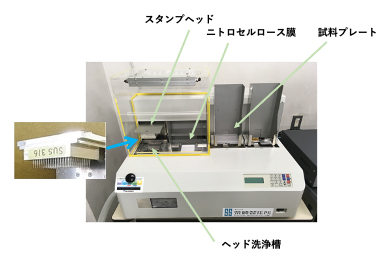rebecsinibは、がん幹細胞や動物モデルにおいて、多くの悪性腫瘍のクローン形成能や免疫回避能を駆動するADAR1タンパク質の過剰なスプライシングを逆転させた。 In cancer stem cell and animal models, rebecsinib reversed overactive protein splicing of ADAR1 protein that drives cloning capacity and immune evasion by many malignancies.
2023-02-16 カリフォルニア大学サンディエゴ校(UCSD)
◆この研究成果は、「Cell Stem Cell」2023年2月16日号に掲載されました。
◆通常、ADAR1は、自然免疫反応(外敵に対する身体の初期反応)の制御に関与している。ADAR1が行うA-to-I編集は、身体のRNAが免疫系から攻撃されないように、ある側面を変化させる。また、ADAR1は、ヒト免疫不全ウイルスやC型肝炎など、ある種のウイルスのRNAを修飾することによって、その複製や拡散を抑制していると考えられている。しかし、抑制されていないADAR1の過剰発現は、がん細胞が宿主の自然免疫反応を回避することを可能にする。
◆Jamiesonらのこれまでの研究により、悪性微小環境における破壊的な炎症シグナルがADAR1p150の過剰発現を引き起こし、慢性骨髄性白血病(CML)や、骨髄線維症などの前白血病を急性骨髄性白血病(AML)に進行させる特定の造血幹・前駆細胞の悪性再プログラミングを誘導することが明らかになっている。さらに、ADAR1p150は、20種類の悪性腫瘍において、治療抵抗性のドライバーと免疫サイレンサーの両方として浮上しています。
◆AMLとCMLはどちらも比較的まれながんですが、どちらも死に至る可能性があり、特に二次性AML(sAML)は5年生存率がわずか26%です。最新の入手可能なデータによると、患者さんの半数以上が診断後1年以内にsAMLで死亡しています(2017年の新患21,380人のうち10,590人が死亡しています)。
<関連情報>
- https://today.ucsd.edu/story/small-molecule-drug-reverses-adar1-induced-cancer-stem-cell-cloning-capacity
- https://www.cell.com/cell-stem-cell/fulltext/S1934-5909(23)00008-5
レベクシニブによる悪性腫瘍 ADAR1 スプライスアイソフォームスイッチングの回復 Reversal of malignant ADAR1 splice isoform switching with Rebecsinib
Leslie A. Crews,Wenxue Ma,Luisa Ladel,Jessica Pham,Larisa Balaian,S. Kathleen Steel,Phoebe K. Mondala,Raymond H. Diep,Christina N. Wu,Cayla N. Mason,Inge van der Werf,Isabelle Oliver,Eduardo Reynoso,Gabriel Pineda,Thomas C. Whisenant,Peggy Wentworth,James J. La Clair,Qingfei Jiang,Michael D. Burkart,Catriona H.M. Jamieson
Cell Stem Cell Published:February 16, 2023
DOI:https://doi.org/10.1016/j.stem.2023.01.0

Highlights
•ADAR1p150 isoform-mediated A-to-I RNA editing fuels human LSC generation
•Lentiviral ADAR1 and splicing reporters enable detection of ADAR1p150 activation
•Rebecsinib inhibits ADAR1p150-driven LSC self-renewal while sparing normal HSCs
•Rebecsinib pre-IND studies show scalable chemistry and favorable pharmacokinetics
Summary
Adenosine deaminase acting on RNA1 (ADAR1) preserves genomic integrity by preventing retroviral integration and retrotransposition during stress responses. However, inflammatory-microenvironment-induced ADAR1p110 to p150 splice isoform switching drives cancer stem cell (CSC) generation and therapeutic resistance in 20 malignancies. Previously, predicting and preventing ADAR1p150-mediated malignant RNA editing represented a significant challenge. Thus, we developed lentiviral ADAR1 and splicing reporters for non-invasive detection of splicing-mediated ADAR1 adenosine-to-inosine (A-to-I) RNA editing activation; a quantitative ADAR1p150 intracellular flow cytometric assay; a selective small-molecule inhibitor of splicing-mediated ADAR1 activation, Rebecsinib, which inhibits leukemia stem cell (LSC) self-renewal and prolongs humanized LSC mouse model survival at doses that spare normal hematopoietic stem and progenitor cells (HSPCs); and pre-IND studies showing favorable Rebecsinib toxicokinetic and pharmacodynamic (TK/PD) properties. Together, these results lay the foundation for developing Rebecsinib as a clinical ADAR1p150 antagonist aimed at obviating malignant microenvironment-driven LSC generation.


